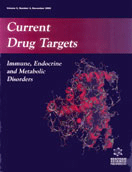Abstract
STAT5 belongs to a small family of transcription factors with dual functions. The seven signal transducers and activators of transcription (STAT) act as signaling components between the plasma membrane and the nucleus, and as transcription factors with specific DNA binding ability in the nucleus. STAT5 regulates the expression of genes, which determine important cellular phenotypes. It can promote proliferation and inhibit apoptosis, but is also involved in the regulation of differentiation between specific gene expression. STAT5 can also contribute to the transformed phenotype. In many leukemias and some solid tumors, STAT5 is constitutively activated through receptors or receptor associated tyrosine kinases and contributes to the survival and the proliferation of malignant cells. STAT5 activity appears to be limiting for these phenotypes. Inhibition of STAT5 in these tumor cells results in growth arrest and apoptosis. Targeting of STATs and other downstream mediators of oncogenic tyrosine kinases provides a promising strategy for tumor therapy, which might be refractory to resistance mechanisms incapacitating tyrosine kinase inhibitors. The well-studied steps in the activation of STAT5 and its roles in different subcellular compartments suggest original interference strategies, which could be used to inhibit its function. The challenge for drug developers will be the exploitation of defined protein-protein or protein-DNA interactions as targets of inhibition.
Keywords: STAT activation, signal transduction, targeted interference, peptide aptamers, cancer therapy



















